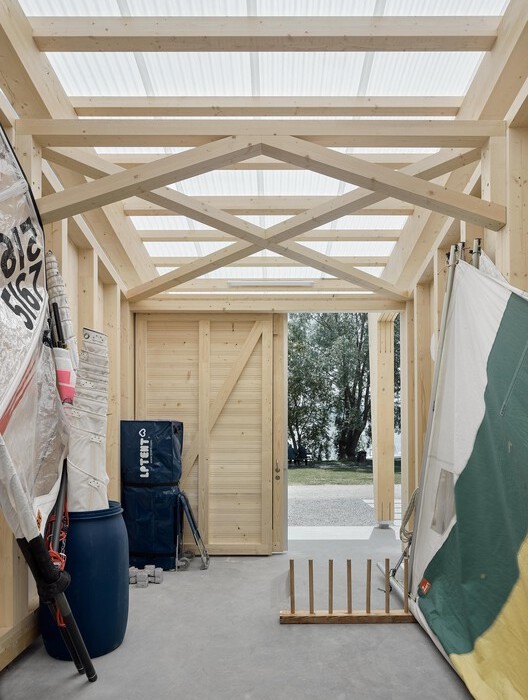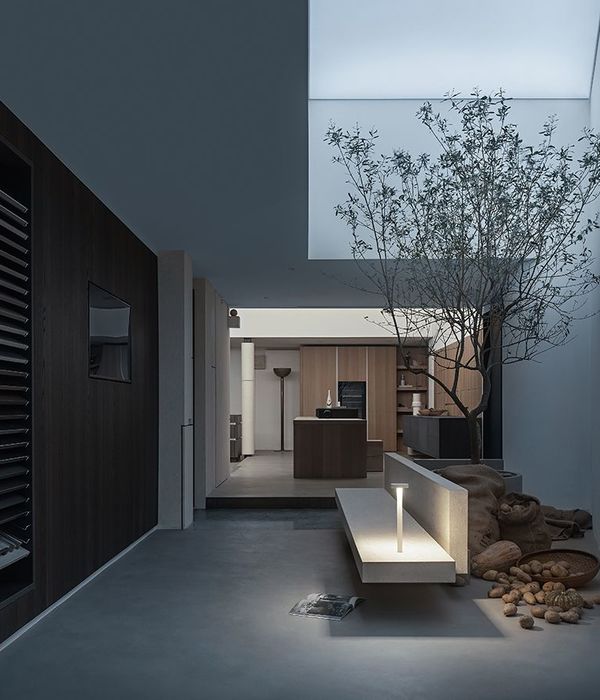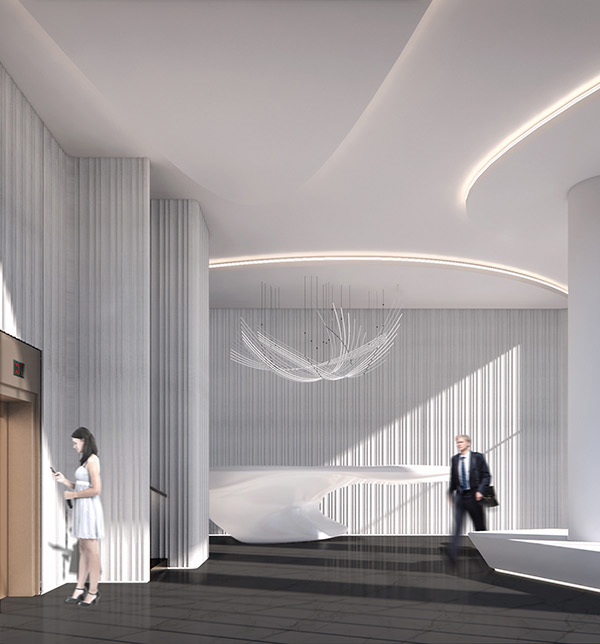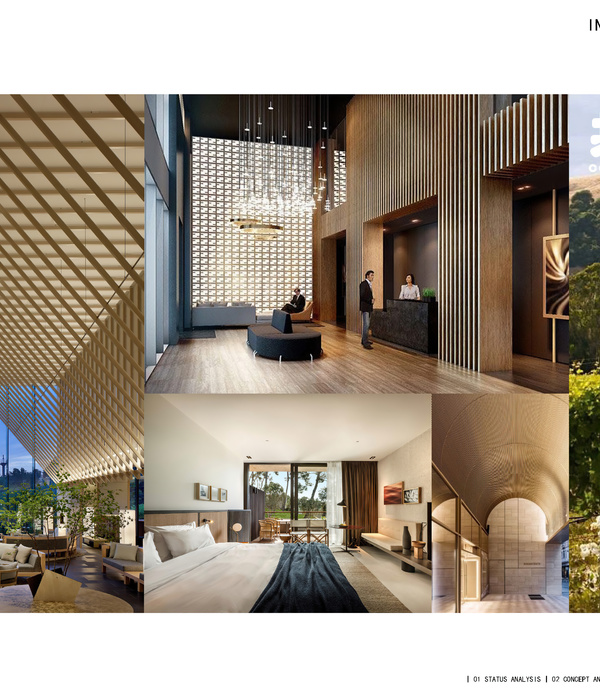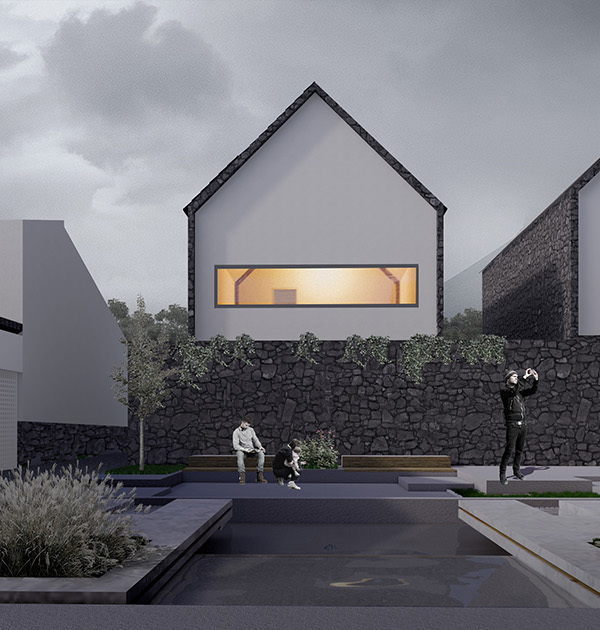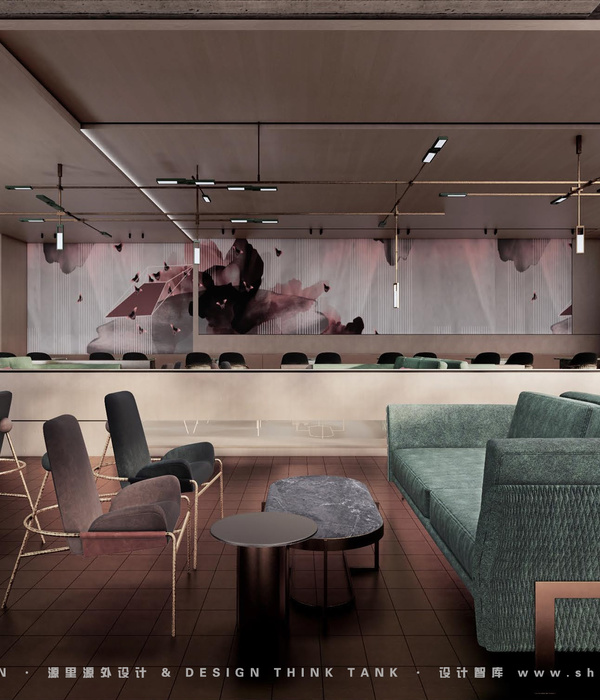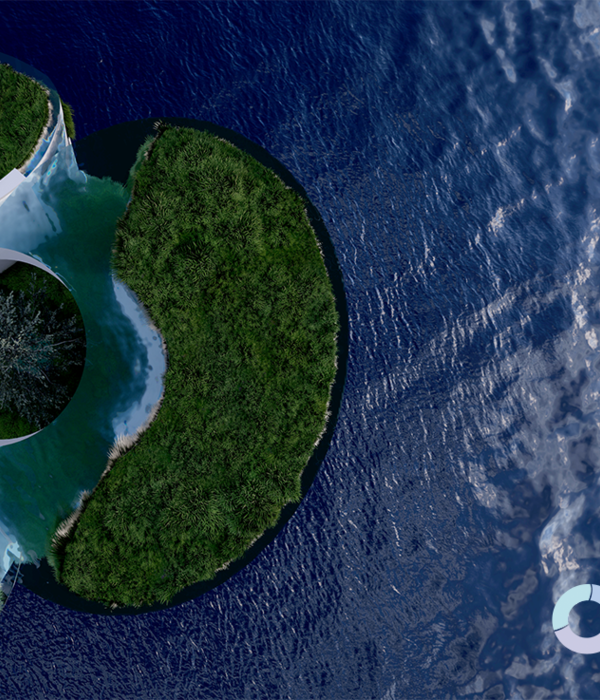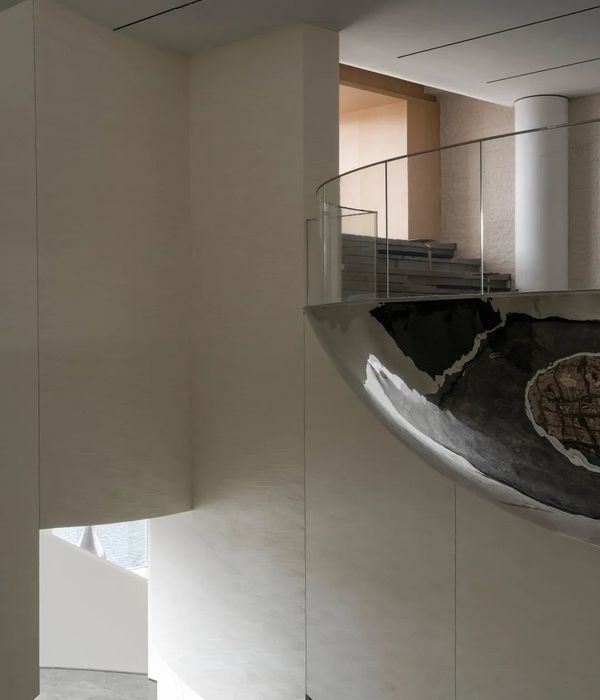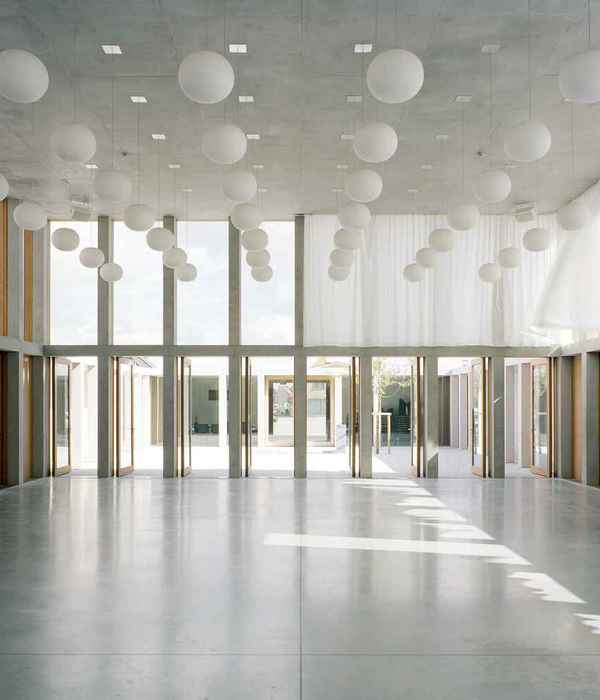该项目的目标在于修复完整的现存建筑并根据21世纪的新需求补充新的空间。除了满足计划的要求外,最重要的目的是将美术馆向城市与市民开放。这里将会是一个超越美术馆功能本身的活动场所。
▼场地鸟瞰,Aerial view of the site ©hakar
The aim was to refurbish the existing architecture of the ensemble and supplement it with new spaces for the needs in the 21st century. Apart of meeting the requirements of the program, the essential intention was to significantly open the gallery to the city and thus to the public. Such an area is to be a place of activities that go beyond its gallery function.
▼建筑概览,Overview of the building ©hakar
▼层次丰富的建筑体量,Layered building volumes ©hakar
建筑位于多瑙河岸和市中心之间,地理位置优越。由于这里建筑密度较高,美术馆成为历史城市肌理的一部分。它由多种风格的体量组成,包含巴洛克,新古典主义,还有于20世纪70年代新加在原有建筑上的东欧晚期现代纪念性元素。最主要的部分由杰出建筑师Vladimír Dedeček设计。通过该项目建筑师为这片区域添加了多样的新空间。最主要的体量由20世纪70年代的金属表皮组成,与巴洛克元素形成鲜明对比。
▼分析图,Diagram ©Architekti B.K.P.Š.
▼流线分析,Circulation diagram ©Architekti B.K.P.Š.
The ensemble is situated in a prestigious location between the Danube embankment and the city centre. Due to its density, it is part of its historical urban structure. It consists of contrasting architectural layers of baroque, neoclassicism and mainly of late modern East European monumentality added to the existing volumes of the gallery in the 1970s. This dominating part was designed by distinguished architect Vladimír Dedeček. By this project new spaces of various use have been added to the area. Also the missing direct accessibility of the area from the historical center was created. The materiality of the volumes is dominated mainly by metalic surfaces of the 1970s period contrasting with the materials of the baroque part.
▼立面特写,Close-up of the facade ©hakar
▼公共空间,Public spaces ©hakar
斯洛伐克国家美术馆的修复与扩建是一个不同寻常的复杂多层次任务。除了在有限的地块满足新需求以外,由于方法论的缺失,现代主义晚期的重建显得尤其困难。另外,弥补20世纪50年代和70年代扩建中的不足也是十分必要的。在巴洛克风格的中翼修建了一个新的入口前厅,并为展览空间增加了一个新的展厅,用于举办大型装置和活动。新的储藏室设置在原有建筑中。原本较为封闭的建筑体,通过庭院,过道以及通透的首层空间面向公众开放。它会是一个开展不同活动的场所。建筑综合体的氛围受对比强烈的周边环境和独特的展览空间启发。在2022年12月落成后的短短几个月内,它就已成为布拉迪斯拉发市中心一个广受欢迎的热闹场所。
▼新旧交接,Combination of the new and old elements ©hakar
▼建筑遗产,Architectural heritage ©hakar
The refurbishment and extension of the area of the Slovak National Gallery was an unusually complex and multi-layered task. Apart of meeting the new requirements of the program on the limited area of the plot, the reconstruction of the late modern period was particularly difficult because of missing metodology. It was also necessary to correct several shortcomings originating from previous reconstructions and extensions in the 1950s and 1970s. A new entrance vestibule was created in the baroque central wing and the exhibition spaces were supplemented with a new exhibition hall for large installations and events. The body of the new depository was added to the existing volumes. Originally a relatively closed ensemble, it is conceived as an area open to the public through courtyards, passageways and permeability of ground floor spaces. It should be a place for a wide range of different activities. The atmosphere of this complex is intended to inspire by the medium of contrasting architectural neighbourhood and unique exhibition spaces. In just a few months after its completion in December 2022, it has become a sought-after lively place in the center of Bratislava.
▼室内概览,Overview of the interior ©kekeli
▼现代与古典交融,Combination of modernity and classical elements ©hakar
在材料概念上,根据建筑不同部分我们采用了多种施工工艺。庭院中珍贵的巴洛克拱廊被精心保留下来。巴洛克式的倒立面在先前的重建中受到严重破坏。在这次重建中,它不是作为复制品,而是根据其构造本质进行了修复。现代主义晚期的建筑由钢结构支撑。由于热物理特性不足,建筑立面需要被完全更换,采用了这一时期原有的红白色调。部分新的铝合金立面复刻了原有立面。以前的铝制板条经过风雨侵蚀后被放置在新的储藏室。巴洛克式拱廊的水磨石地面使用了被破坏的石板路作为填充。几乎所有的室外公共空间都是透水的。庭院中的陈年古木得到了保留。
▼展览空间,Exhibition spaces ©kekeli
▼通透庄严,Transparent and solemn ©hakar
▼对比强烈的色彩,Contrasting colors tone ©hakar
Concerning the material concept, different procedures were applied for different parts of the ensemble. The valuable baroque arcades of the courtyard have been carefully restored. The averted facade of the baroque part was seriously damaged during previous reconstructions. In this reconstruction, it was restored not as a replica, but in its tectonic essence. The buildings of the late modern period were steel supporting structures. Their facades had to be completely replaced due to their insufficient thermo-physical characteristics. The original red-white color code of this period was applied. The new aluminum facade elements are partly a replica of the original ones. The former ALU slats with their authentic weathered surface have been installed on the new volume of the depository. Several original surfaces, materials and elements were reused in different positions. Destroyed stone pavements were used as filler in the terrazzo floors of the baroque arcades. Almost all outdoor public areas are water-permeable. The mature trees of the courtyard have been preserved.
▼场地平面,Site plan ©Architekti B.K.P.Š.
▼首层平面,Ground floor plan ©Architekti B.K.P.Š.
▼一层平面,First floor plan ©Architekti B.K.P.Š.
▼二层平面,Second floor plan ©Architekti B.K.P.Š.
▼三层平面,Third floor plan ©Architekti B.K.P.Š.
▼剖面图,Sections ©Architekti B.K.P.Š.
Autors: Martin Kusý II., Pavol Paňák, Martin Kusý III., Mária Michalič Kusá , Jana Paňáková, Photographer: Matej Hakár Ján Kekeli
{{item.text_origin}}

